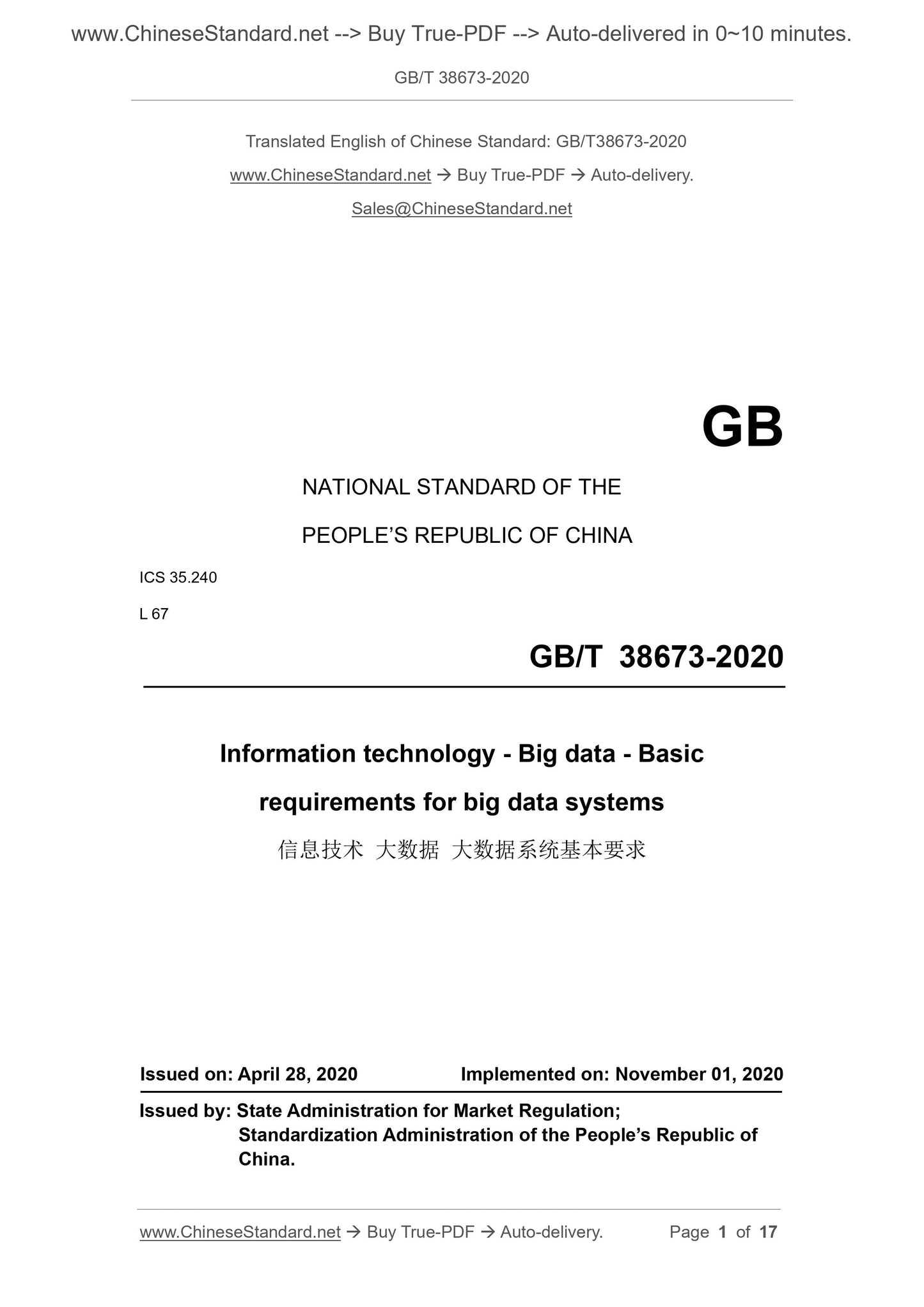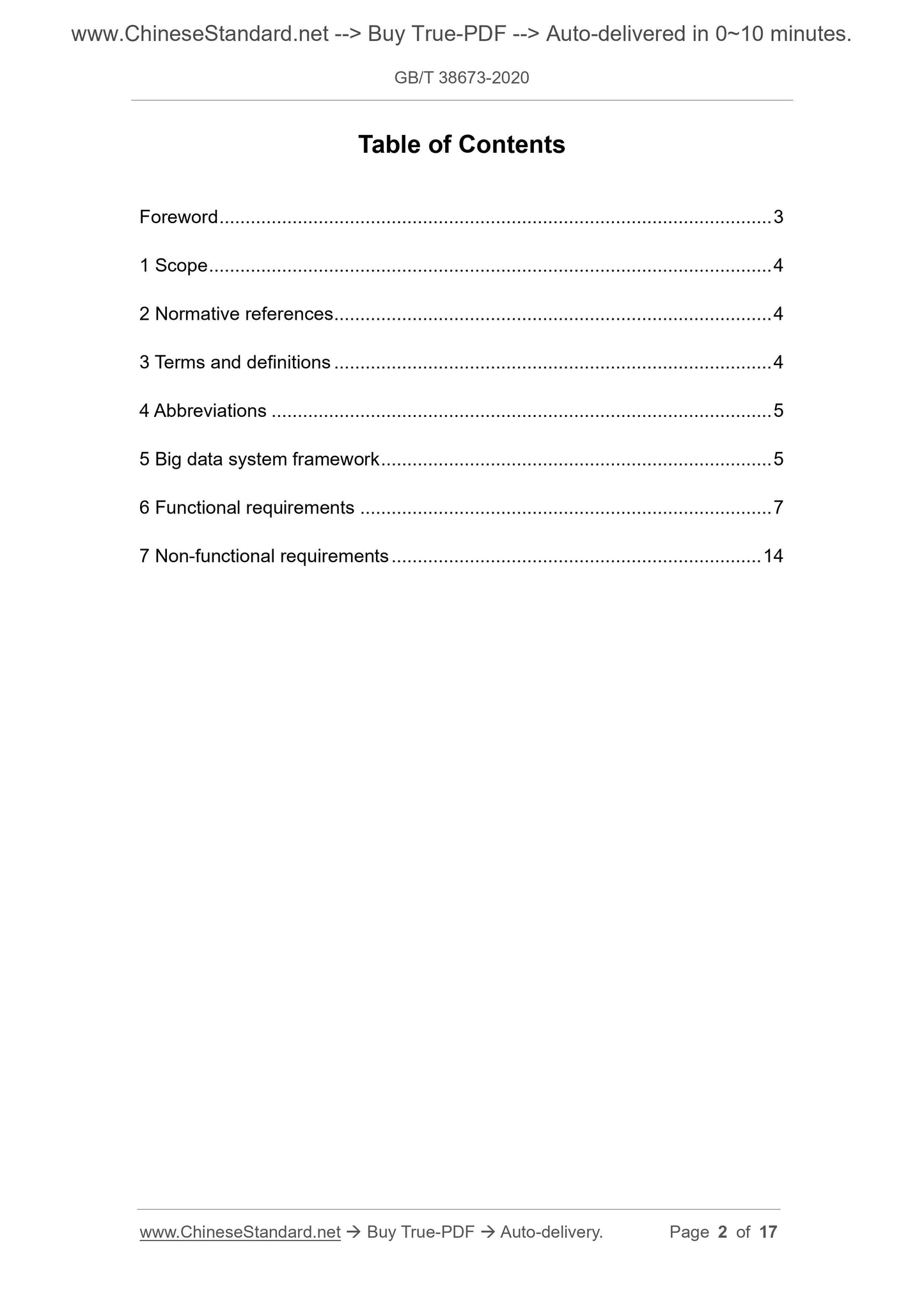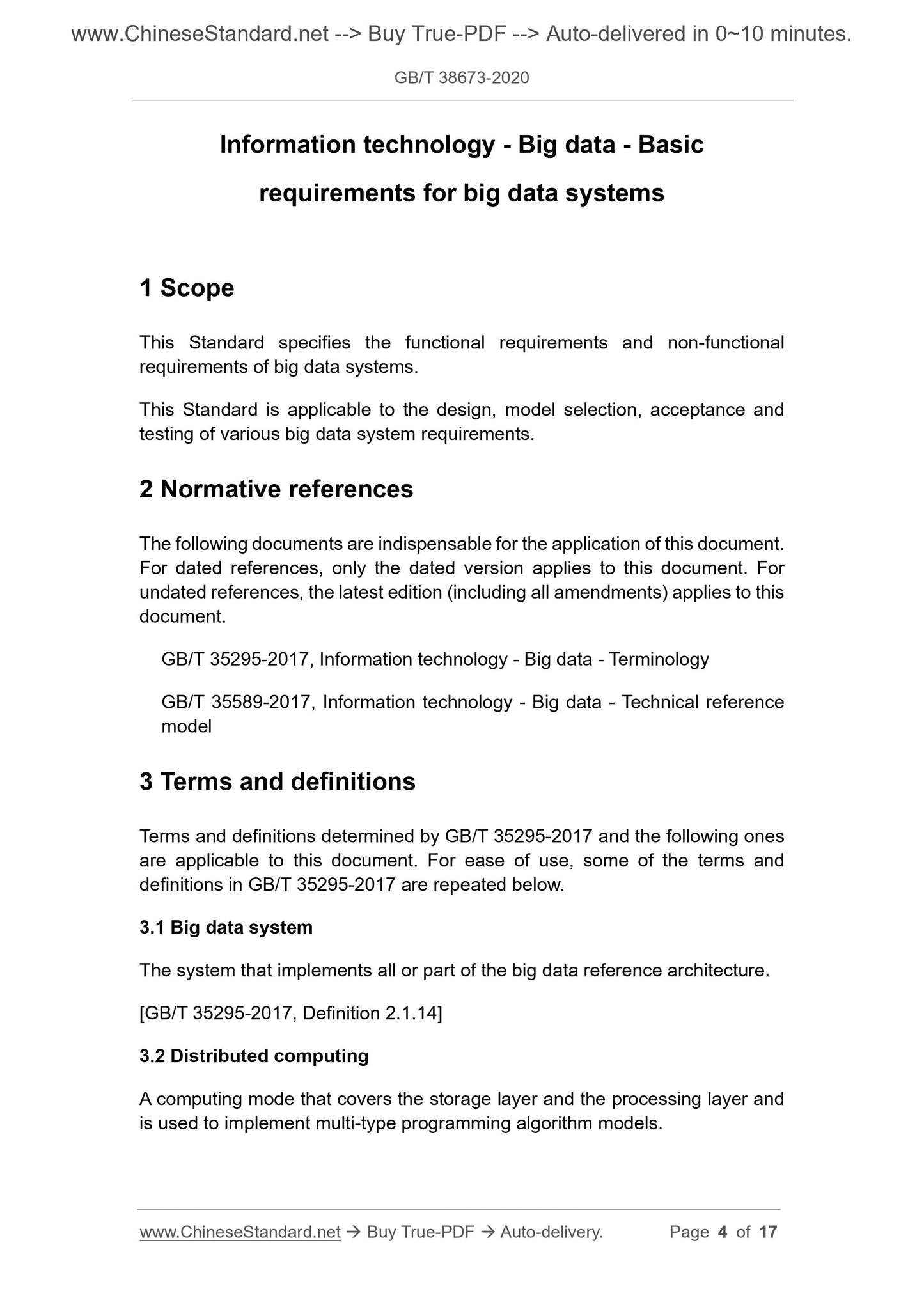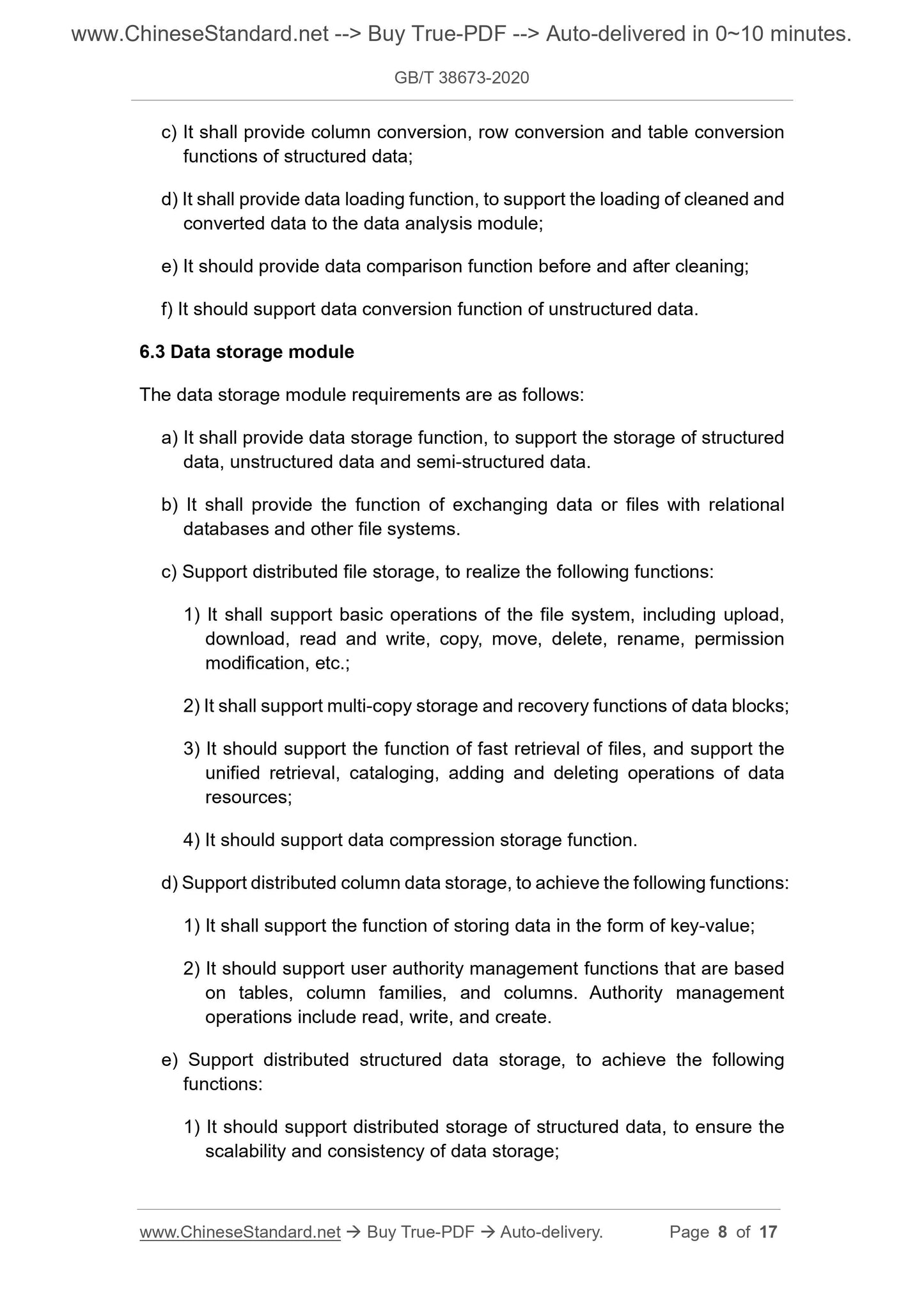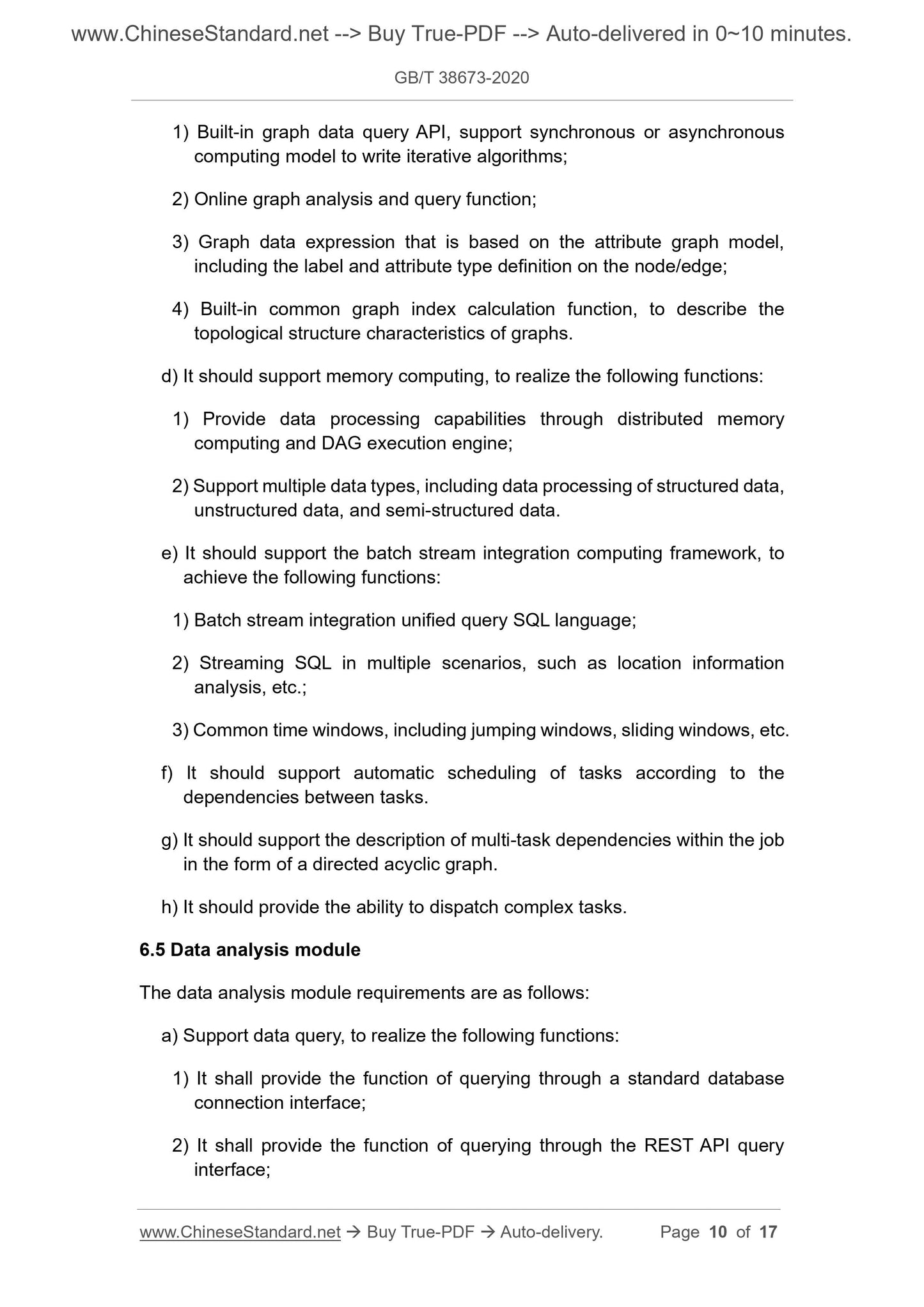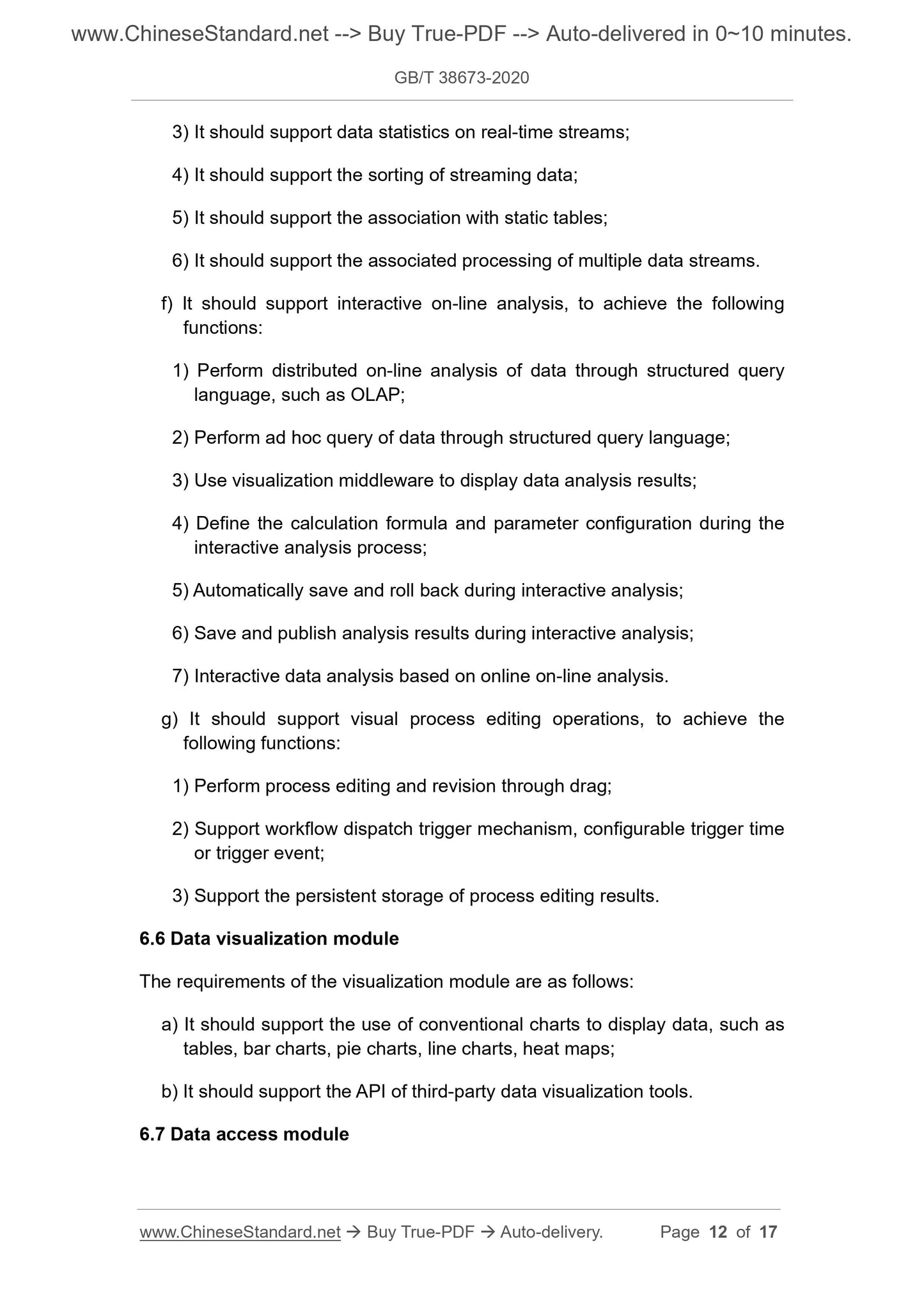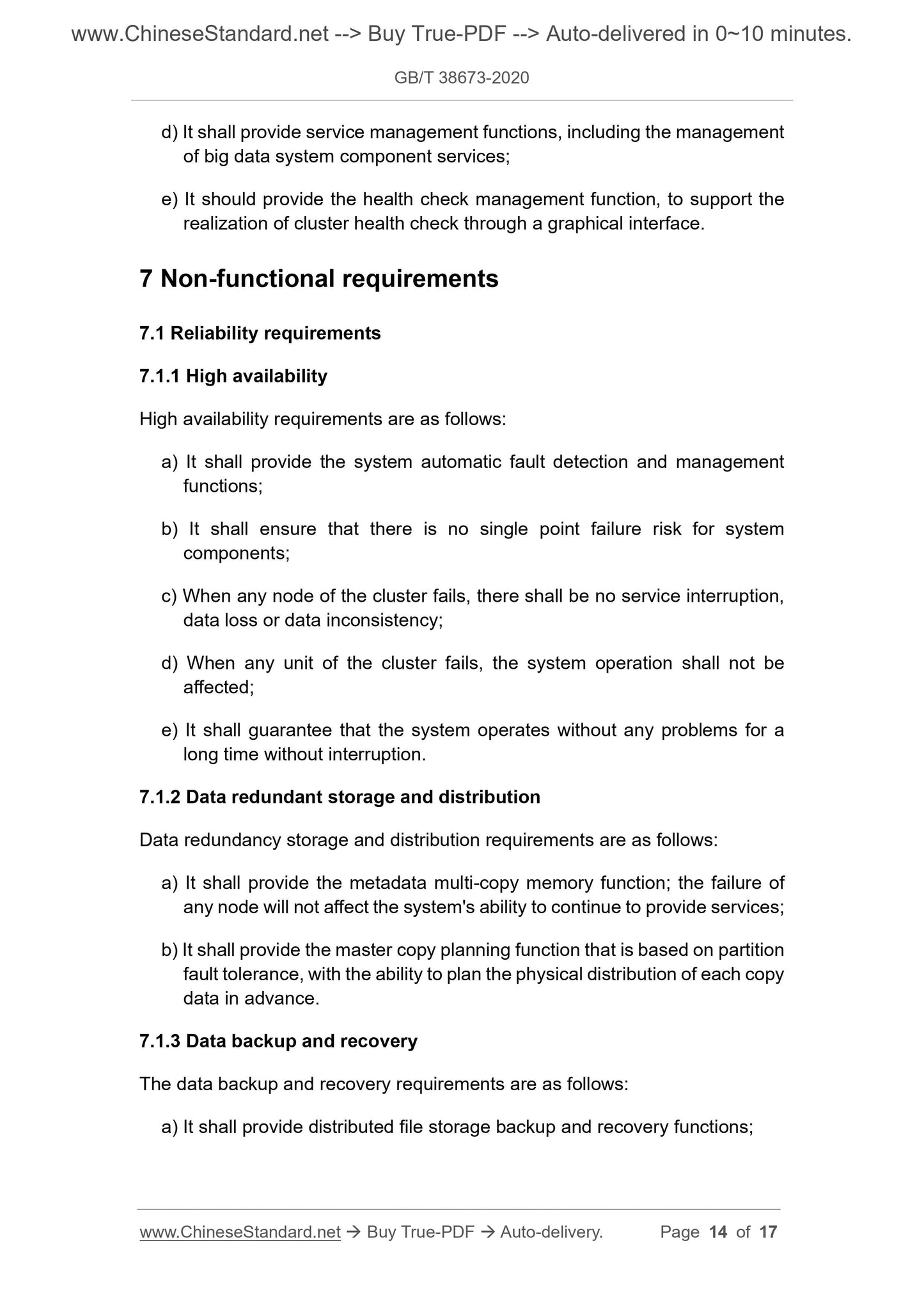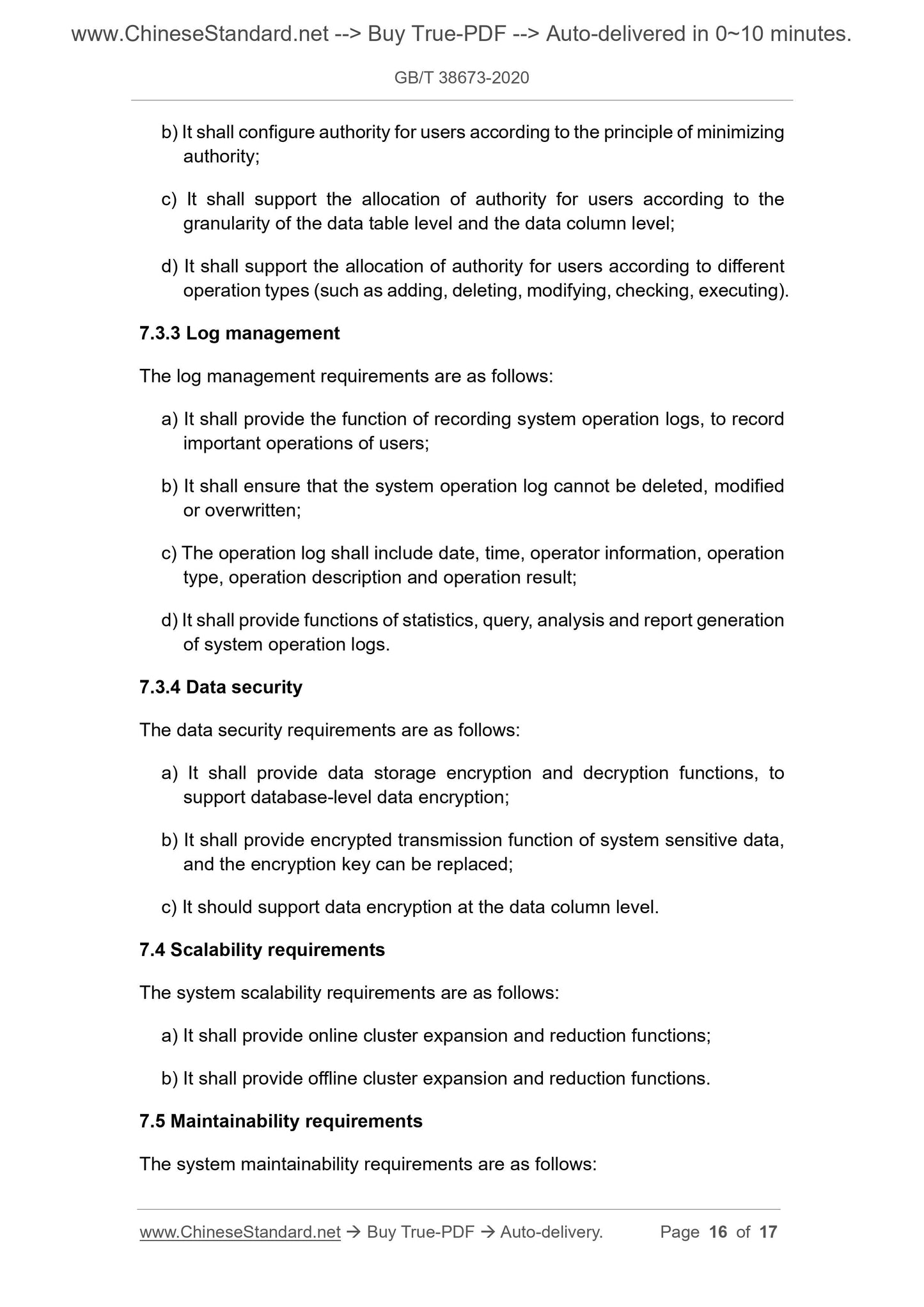1
/
of
8
www.ChineseStandard.us -- Field Test Asia Pte. Ltd.
GB/T 38673-2020 English PDF (GB/T38673-2020)
GB/T 38673-2020 English PDF (GB/T38673-2020)
Regular price
$205.00
Regular price
Sale price
$205.00
Unit price
/
per
Shipping calculated at checkout.
Couldn't load pickup availability
GB/T 38673-2020: Information technology - Big data - Basic requirements for big data systems
Delivery: 9 seconds. Download (and Email) true-PDF + Invoice.Get Quotation: Click GB/T 38673-2020 (Self-service in 1-minute)
Newer / historical versions: GB/T 38673-2020
Preview True-PDF
Scope
This Standard specifies the functional requirements and non-functionalrequirements of big data systems.
This Standard is applicable to the design, model selection, acceptance and
testing of various big data system requirements.
Basic Data
| Standard ID | GB/T 38673-2020 (GB/T38673-2020) |
| Description (Translated English) | Information technology - Big data - Basic requirements for big data systems |
| Sector / Industry | National Standard (Recommended) |
| Classification of Chinese Standard | L67 |
| Classification of International Standard | 35.240 |
| Word Count Estimation | 14,135 |
| Date of Issue | 2020-04-28 |
| Date of Implementation | 2020-11-01 |
| Quoted Standard | GB/T 35295-2017; GB/T 35589-2017 |
| Issuing agency(ies) | State Administration for Market Regulation, China National Standardization Administration |
| Summary | This standard specifies the functional and non-functional requirements for big data systems. This standard is applicable to the design, selection, acceptance and testing of various types of big data systems. |
Share
